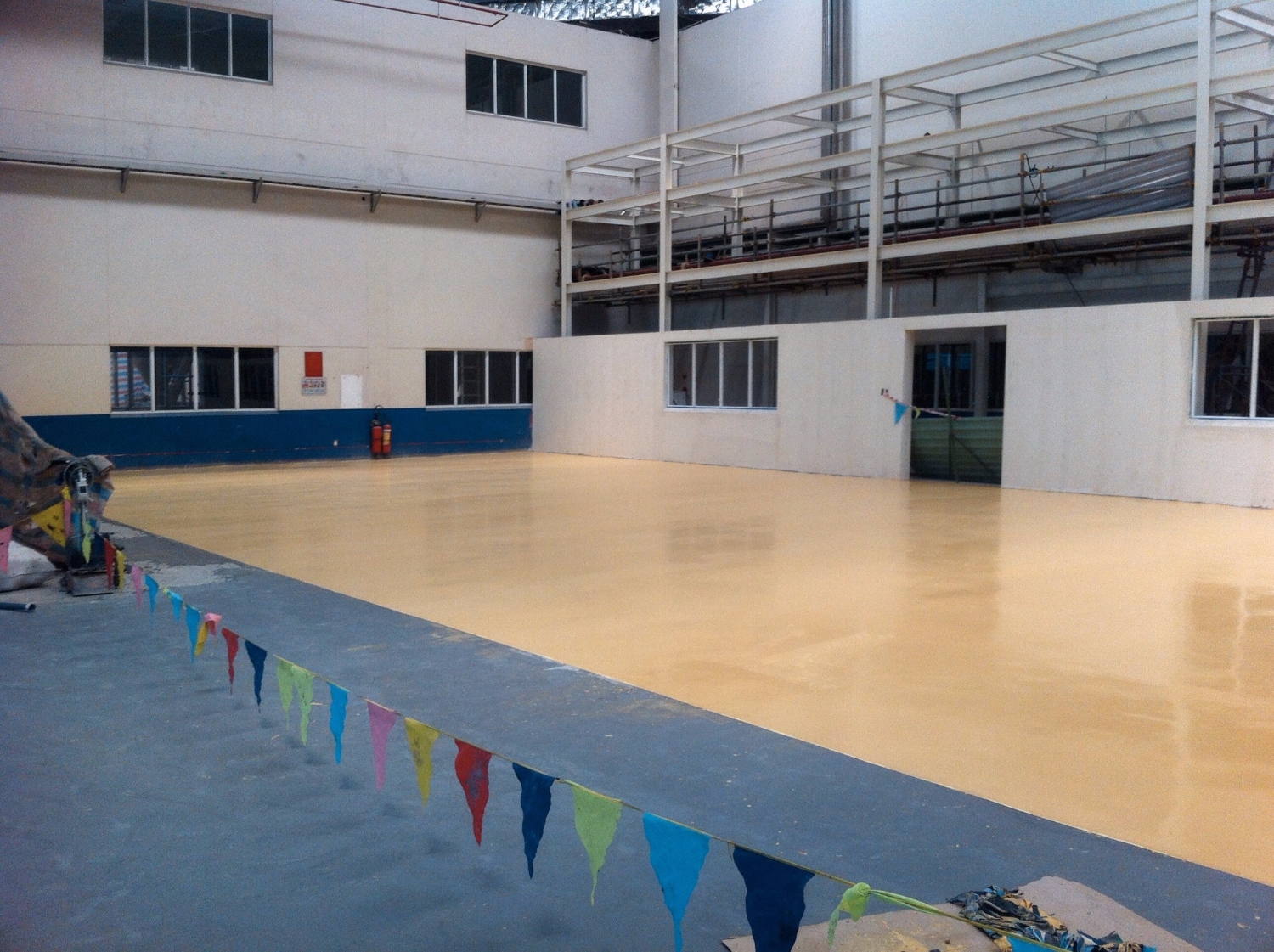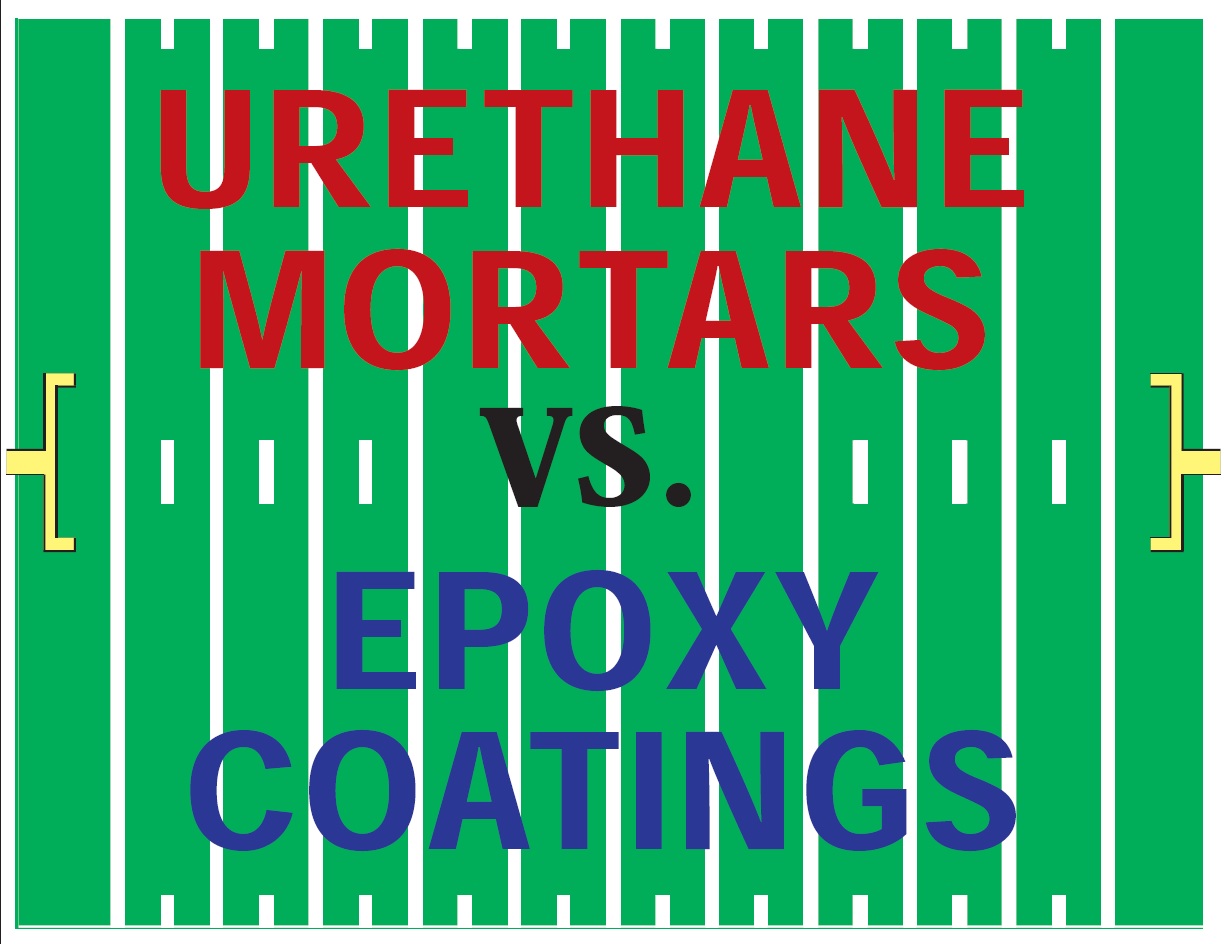POLYURETHANE MORTARS VS EPOXY COATINGS
By John D. Crowley
USDA, FDA, OSHA regulations have plant managers scrambling for flooring solutions
Facility managers are challenged with the day-to-day operations of their buildings, whether it's a manufacturing facility, big box retail or warehouse. They are tasked with the maintenance of the building — everything from the floor to the ceiling.
While flooring is probably not at the top of the FM's list, it's paramount that it meets U.S. Drug Administration (USDA), Food & Drug Administration (FDA) and Occupational Safety and Health Administration (OSHA) regulations.
Epoxy mortar flooring systems have routinely been the choice for new construction and for use in concrete floor resurfacing. But the biggest headache facility managers have with epoxy mortars is that they have a tendency to pop off the slab when introduced to radical heat changes, and that means valuable time and revenue is lost while the concrete is being repaired.
But there's a new kid on the block — urethane mortar flooring systems. These systems have been around for almost three decades but, because of restrictive patents and reduced availability, they have only been available in the U.S. the last five years.
Continued research and development over the past 15 years has been instrumental in formulating these systems with high resin content and low viscosity. Designed to exhibit a high cross-linking density, cementitious urethane systems are non-toxic, non-hazardous, and highly chemical-resistant and can now be installed more efficiently and effectively.
Because of the huge disparity in temperature in a short period of time, urethane mortar flooring is ideal in slaughterhouses, meat/fish/dairy processing, breweries, heavy-duty industrial food processing and pharmaceutical manufacturing facilities. Floors in these environments are subjected to abuse, heavy traffic, chemical attack and the most hostile conditions out there. Urethane mortars do well in these abusive environments but not every area in a plant will require them. Epoxy systems still rank high on the preferred material selection list; however, trickier and more demanding environments are better suited with a cementitious urethane system.
Coatings not only need to protect concrete from harmful substances, but from mechanical stress, too. In a cold range of temperature transition, epoxy coatings often become brittle and strained, reducing their ability to withstand mechanical loads. Moreover, this often presents a serious wear problem.
The advantages of applying a urethane mortar flooring system are numerous. The cementitious urethane makeup has a similar modulus of elasticity to that of concrete. This virtually eliminates differential flexing that is prevalent with most other resins.
There's no primer needed before applying the mortar, which saves considerable downtime — approximately half. Because of higher odors associated with epoxy coatings, meat/fish and dairy processing areas generally require venting. Fans help to displace the odors. Urethane mortar systems contain very low odor and are of no risk to open food products.

In addition to being able to absorb and withstand radical heat and cold temperature change, urethane mortar systems also have sound deadening properties. These are particularly beneficial in areas where steel wheels are used in such places as bakeries. Urethane mortars can effectively handle abuse from dropped pots and utensils in commercial kitchens. Now, more than ever before, demand is ever-increasing for these cement-based urethanes because they can be quickly installed over new and old concrete with little or no substantial downtime.
Urethane mortars accomplish two things: First, they cut the flooring project time almost in half, allowing for rapid application and curing, and
urethane mortars withstand the test of time in hostile environments where radical temperature shifts, heavy impact and damaging chemical agents are par for the course. On renovation jobs where downtime is next to nil, cement-based urethanes can be applied to freshly poured concrete, thus eliminating the typical 28-day wait time for the concrete to cure.
Urethane mortars are gaining ground on once standard issue systems like epoxy and vinyl ester flooring systems in these special need environments. Urethane mortars are low-odor and high-solid systems that can be applied next to fully operational food processing areas, eliminating the need to shut down an operation to resurface the floor. Additionally, urethane mortars are favored when other trades can work simultaneously in adjoining or adjacent areas.
Architects and designers often specify low-gloss finishes, particularly in building structures that are affected by gloss reflection such as printing areas.
While there are advantages to applying urethane mortar flooring systems, there are some shortcomings to consider. Having a cement and
water cure, these systems should be avoided at temperatures above 90 degrees F to reduce the risk of blistering from increased carbon dioxide being trapped during the rapid initial curing process. The installation of a trowel finished system also takes longer than applying a commercial epoxy. These types of floors are installed for performance and are not classified as decorative systems, but they can be enhanced with colored chips.
Trowel applied, self-leveling slurry and broadcast are the three main urethane mortar systems. The trowelapplied urethane is the original system and has been around for more than 30 years, and has withstood the test of time in the harshest environments. It offers the highest level of durability with a lifespan of more than ten years — double the life of epoxy mortars. So while the urethane mortars are slightly more expensive, they offer long-term performance and solid return on investment.
A trowel applied urethane mortar system, applied at a thickness of a quarter-inch or more is ideal to be applied over concrete, polymer modified concrete, steel and water resistant plywood. This system can be applied through a screed box or by hand-pouring the material and then finished with a trowel. The trowel applied urethane mortar features exceptional durability, tolerates thermal cycling and high service temperatures while providing rapid installation time. It is designed for the most abusive environments. Typical food processing environments are dairies, breweries and slaughterhouses.
Heavy-duty self-leveling urethane mortar systems offer a seamless matte finish and typically are applied up to one-quarter-inch thickness. They use the same resins as the trowel applied urethane mortars and have physical properties that are twice that of concrete. These self-leveling systems provide maximum duty; they are flowable slurry systems, providing a smooth surface ideal for areas exposed to steel wheels or other heavy traffic. The self-leveling urethane mortar system has a non-reflective, matte finish that provides resistance to a wide range of chemicals while providing an easy to clean surface.
Multi-layer broadcast systems do not require primers and can be finished with colored quartz or vinyl chips. These systems are applied with
a “pin rake” or trowel at a thickness of 1/8" to 3/16". Top coats can be applied once the area is cured. Broadcast urethane mortars incorporate the same flowable urethane as the self-leveling systems but with the added slip resistance of a natural quartz aggregate broadcast. They have exceptional durability and tolerate thermal cycling and high service temperatures.
About the Author
John D. Crowley is President of the International Concrete Repair Institute/Metro New York Chapter and Vice President of New Business Development for Garon Products, Inc. in Wall, N.J.

